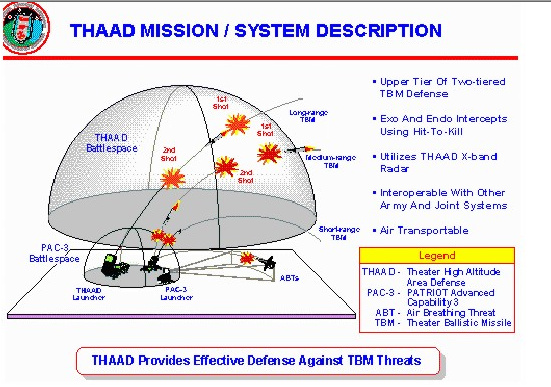Arguments with you, turn out inconclusive normally. However, I will give this a try.
Interceptors have a
hit probability (in case you didn't knew), and this probability vary from interceptor to interceptor (50% - 100%), depending upon their individual characteristics.
9M96E and 9M96E2 are more accurate and maneuverable than 48N6E2, 48N6E3 and 40N6 respectively, but with compromises in range, speed and types of targets they can engage. YOU have an assortment of interceptors (to choose from) but their are
respective trade-offs.
Taken from
ausairpower.net
9M96 family of interceptors employ
crude '
shape-charged explosive technique' to engage potential targets, and their
hit probability against ballistic missiles is 80%.
The 48N6 missile is reportedly suited for destroying medium-range ballistic missiles with a maximum range of 3,500-km flying at 4,800 meters per second, at a distance of 5 to 60 km and an altitude of 2 to 27 km. The warhead is able not only to deflect the incoming ballistic missile but also effectively destroy it. In the case of the better-known and extremely maneuverable 9M96 missile, the producer claims an 80 percent hit probability against a ballistic missile and a 70 percent kill probability against a particular part of a ballistic missile (i.e., warhead). - Declassified report - SSI - Keir Giles (2015)
---
Your blanket statements notwithstanding, PAC-3
MSE is a class apart from 9M96 family of interceptors, with relatively superior
hit probability against ballistic missiles (> 95%), speed (> MACH 5), altitude (> 30 KM), and its range is reportedly 55 KM (but greater in reality). Being small, light-weight and incredibly maneuverable, PAC-3
MSE also offer meaningful capability against
saturation attacks - very important.
The entire Patriot battery, armed with PAC-3
MSE, PAC-2
GEM-T and PAC-2
GEM-C interceptor suite [M903 configuration], translate into a meaningful capability against
advanced ballistic threats (e.g. Russian 9K720 Iskander), and a large number of air-breathing targets in general including various types of cruise missiles.
PAC-3 MSE > 9M96 family of interceptors in the nutshell
The 48N6 family of interceptors are relatively less accurate and maneuverable than the 9N96 family of interceptors (size and weight among contributing factors), and also have significant constraints in AMD scenario:
Range = 5 -
60 KM
Altitude = 2 -
27 KM
Confirmation in the official source:
http://roe.ru/eng/catalog/air-defence-systems/air-defense-systems-and-mounts/s-400-triumf/
- and also in the documents of
Aviation Week. I have access to one, thankfully.
48N6E2 and 48N6E3 have the maximum flight range of 200 KM and 250 KM respectively, to engage
aircraft; not in ABM scenario. However, these flight ranges sound good for
marketing.
For instance:
http://bastion-karpenko.narod.ru/S-400_MAKS-2011_012.JPG
PAC-3 MSE > 48N6 family of interceptors in the nutshell
WE are left with 40N6 now. Again, lot of unsubstantiated hype for this interceptor on the web so far. Below is the specifications of its derivative:
S-400 have significant hype on its side due to spread of
disinformation about its ABM capabilities by ill-informed journalists and fanboys alike - I give you this.
60 KM range and 27 KM altitude in ABM scenario, translate to defenses mainly suited for TBM and SRBM. 40N6 expands this battlespace but few can be deployed in a battery and engagement probability will remain uncertain. This is the crux.
Of-course, characteristics of an interceptor
is central to its hit probability. Nevertheless, any
interceptor is designed to take cues from both
command guidance (from the relevant
Fire Control Radar) and
onboard guidance, to engage a target. This is why a more capable FTR would be a contributing factor.
"The 48N6E missile has a large footprint; each TEL tube can hold only one. It has a 150 kilometer range and a 150 kilogram warhead. It uses a combination of radio command guidance and semi-active radar homing guidance. When this missile was introduced, it was relatively inaccurate and compensated for its poor accuracy with a 150 kilogram warhead. The early versions of the US Patriot SAM had a 90 kilogram warhead by contrast. A large warhead requires a larger and heavier missile, reducing range and speed. The 48N6E is a large general purpose missile with a large blast fragmentation warhead that can engage threats across the spectrum from low-altitude cruise missiles to high-altitude short-range ballistic missiles. This missile is loaded one per TEL tube.
The 9M96E1 missile has a much smaller footprint than the 48N6E: each TEL tube can hold up to four. It has a much smaller warhead of just 24 kilograms, as shown in Figure 3. This missile is essentially a “hit to kill” vehicle with a small blast fragmentation warhead that functions almost like a shaped charge, with timed detonation reacting to angle of impact with the target. This missile combines command guidance from the fire control radar with semi-active radar homing, a range of 21.6 nautical miles, and a capability to engage targets as low as 15 feet or as high as 66,000 feet."
Source:
https://www.criticalthreats.org/wp-content/uploads/2016/08/Harmer_Strategic_Impact_S-300_Iran.pdf (PDF format)
You can take your dispute with him.
Let me know what he said to you.
LMAO...YOU are a complete joke.
THAAD defeated an IRBM class target in a complex test in 2017 (FTT-18).
FYI: That was a
4-stage ALBM target simulating an advanced IRBM class threat (first stage is air-launched; additional stages are solid-fueled), and it covered about
4200 KM distance until it was shot down/intercepted.
http://www.thedrive.com/the-war-zon...-says-thaad-has-destroyed-its-first-mock-ibrm
http://www.thedrive.com/the-war-zon...f-alaska-for-the-first-time-during-thaad-test
---
S-500 offer ABM engagement capacity up to 100 KM in altitude (per Russian sources) which is on par with Israeli Arrow 3; between S-400 and THAAD.
See above. PAC-3
MSE changes things.
Doesn't tell us much.
Indian equipment procurement decisions are
political in large part. There is also the element of
mistrust between US and India so far.











